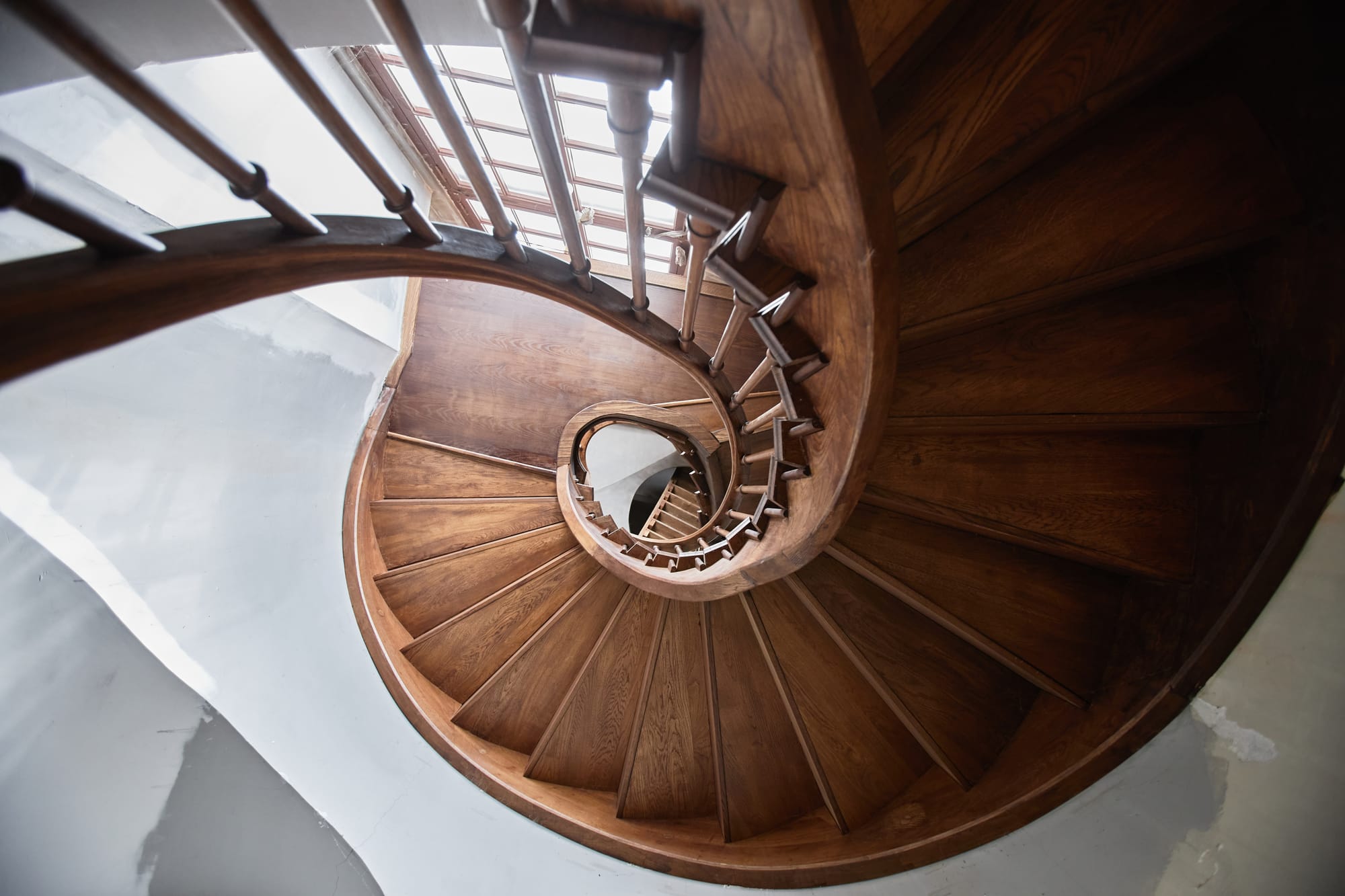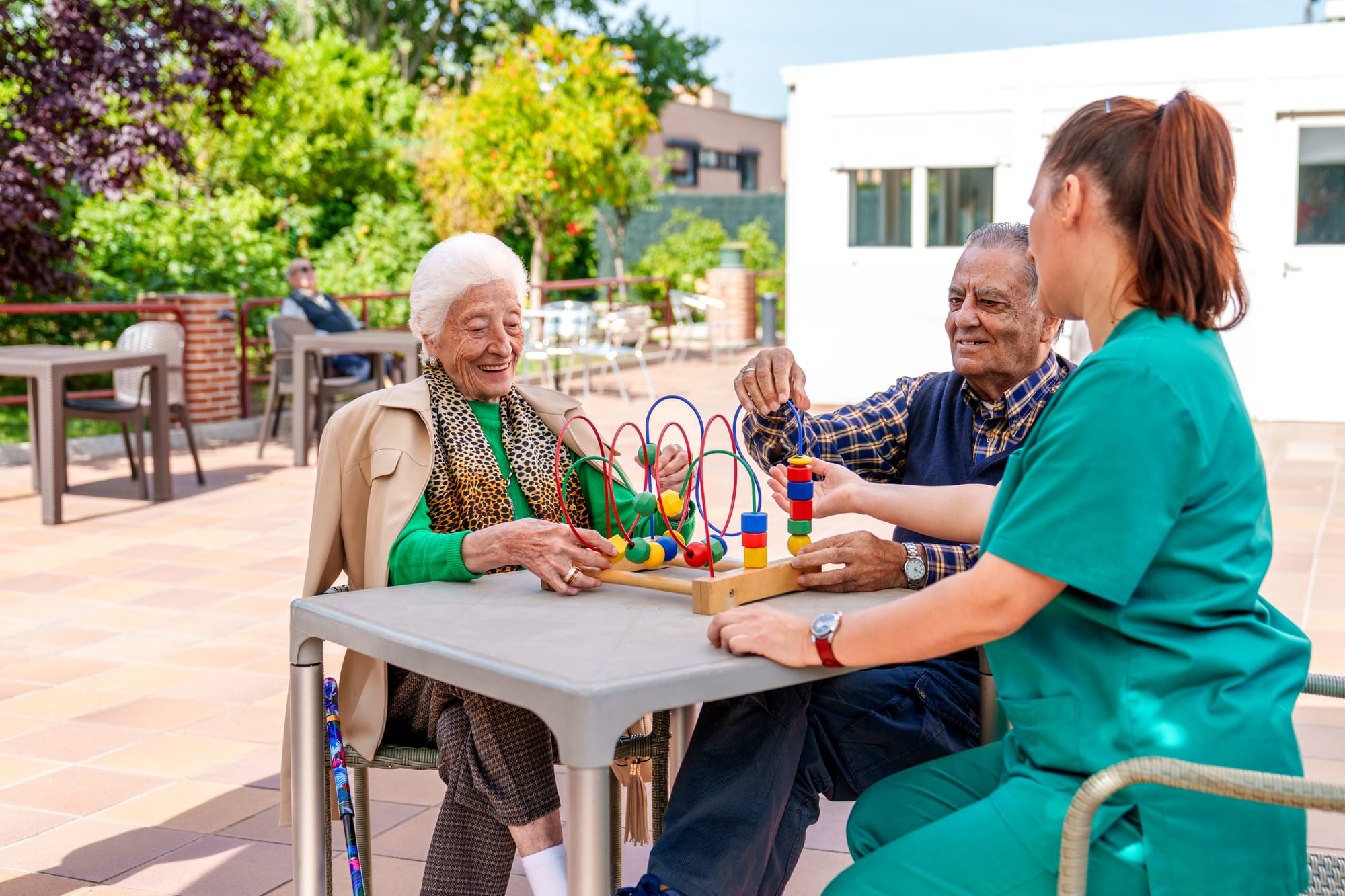From Challenges to Comfort: Palliative Care for Dementia Patients
Practical ways palliative care makes life more comfortable for dementia patients, addressing their physical and emotional needs with care.
Choosing to age in place means deciding to live your later years where you feel most at home. While there are challenges, from mobility to maintenance, the right adjustments and support can help you maintain independence and stay in the place you know best.

Picture this: an elderly couple in their eighties, side by side on their weathered porch swing. The sun is setting, painting their backyard—the same one where their kids played tag decades ago—in a golden glow. They’ve been here so long they know which step on the porch creaks the loudest and where the breeze sneaks through on the hottest days. This isn’t just a house. It’s home.
Then one day, their daughter suggests it might be time to move. “Maybe the retirement community,” she says, trying to sound casual but not quite pulling it off. “Less upkeep, fewer stairs, more help if you need it.” It makes sense. It really does. But logic doesn’t measure up against the pull of a place like this. How do you leave the walls that have watched every argument, celebration, and quiet morning coffee?
This is the heart of aging in place—the desire to stay rooted in a home that’s more than just shelter. But the question isn’t simply whether to stay or go. It’s this: can the home evolve with its owners? Can it become a place where safety meets familiarity? Maybe it’s grab bars in the bathroom, rearranged furniture to clear pathways, or a service that delivers groceries when driving gets too hard.
For this couple, staying isn’t just about nostalgia. It’s about autonomy, dignity, and the kind of peace that only comes from knowing exactly where you belong. And maybe that’s worth finding ways to make it work. Can anything be done to make the home we have be friendlier as we age?
Let’s take a moment to talk about this strange thing we call "home." It’s not just bricks and mortar, after all. It’s the place where your memories are baked into the walls like the smell of old wood and forgotten corners. Consider a woman, maybe someone like your grandmother. She’s fiercely attached to the house she’s lived in for the past fifty years. To ask her to leave that house would be like asking her to leave herself behind.
There’s a reason why home is such an emotional anchor. It’s where we feel safest, where we can still see the memories of who we used to be, and who we became. For someone aging in place, it’s not only about avoiding the institutional chill of a nursing home. It’s about maintaining a sense of autonomy, holding on to those small everyday moments that give life meaning — watering the plants your way, or keeping the curtains pulled back at just the right angle.
And sure, staying in a familiar place comes with challenges. The stairs you used to bound up without thinking now feel like a test of endurance. But the idea of giving up, of trading that familiarity for a new space, can feel worse than any ache or pain. There’s a certain defiance in saying, "No, I’m staying right here." It’s a push back against the idea that aging means surrendering control.
And let’s be honest: after forty years in the same house, you’ve got muscle memory. Who needs lights to find the bathroom at 2 a.m.? There is an amazing amount of comfort to be had from the places we are used to, where we feel safe.
Here’s where things get real. Aging in place sounds wonderful in theory — who wouldn’t want to stay in their own home, sitting in their favorite chair? But let’s talk about the realities that sneak up on you, the ones no one mentions when they romanticize golden years spent in the glow of nostalgia.

Take something as simple as a staircase. It’s just a staircase, right? Wrong. Somewhere along the way, those stairs start looking like Mt. Everest. They were harmless once, but now they mock you. You stand at the bottom, mentally preparing yourself for a trek, and halfway up, you’re out of breath, wondering why the top seems farther away than it used to. This is where aging in place starts to feel like you’re in a house designed for a much younger, more nimble version of yourself.
Then there’s the bathroom — it’s suddenly a hazard zone. Wet tiles, slippery floors, a perfect setup for an impromptu lesson in gravity, but now with serious consequences. Or the kitchen shelves, which, with no warning, are now unreachable unless you’re up for a round of gymnastics involving a wobbly step stool. It’s these everyday tasks, the basic routines of life, that start to feel like obstacles to living.
And let’s not forget the financial aspect. It’s not just about whether you can still physically live in your house. It’s about whether you can afford to maintain it, too. A roof that needs repairing, a furnace that coughs in the dead of winter — all these things have price tags attached. There’s a balancing act between the cost of modifying your home for aging and the very real expenses of professional care or, heaven forbid, full-time assistance.
Still, many people choose the discomfort of creaky knees over the sterility of assisted living. It's about more than practicalities; it's about choosing discomfort in familiar spaces over comfort in foreign ones. At least at home, the stairs may hurt, but they’re your stairs. And that, oddly enough, counts for something.
Now, let’s get to the part where we don’t just sit in our rocking chairs feeling overwhelmed by the challenges. There are solutions — practical, achievable ones — that make aging in place not just possible, but manageable. Sure, the stairs are intimidating, but what if you could install a stairlift? Suddenly, Everest becomes a gentle slope.
Home modifications aren’t just a luxury for the particularly well-off anymore. Small, relatively inexpensive adjustments can make all the difference. Grab bars in the bathroom, ramps in place of stairs, lever-style door handles for arthritic hands. These tweaks might seem minor, but they change the daily landscape of your home from a minefield of potential disasters to a place of ease. It’s not about overhauling everything; it’s about tweaking what already works.

Then, of course, there’s the magic of technology. In-home health monitoring systems are becoming so advanced that your house can practically keep an eye on you when no one else can. These days, you can have a device that reminds you to take your meds, alerts someone if you’ve had a fall, and keeps track of your vitals. It's like living with a very attentive, very quiet roommate who only steps in when necessary.
And you don’t have to do it alone. Home care providers, meal delivery services, and even community volunteers are all options for people who want to stay put but could use a hand with daily tasks. It's about building a network of support that allows you to maintain independence without feeling isolated.
But, here’s the thing: aging in place is not about stubbornly insisting on doing everything yourself. It’s about recognizing where you might need help, and accepting it without feeling like you’ve surrendered your autonomy. After all, isn’t true independence knowing when to lean on others?
Aging in place, despite the "in place" part, isn’t something you do entirely on your own. It’s a team sport, and your family, friends, and neighbors are your best players. They help fill the gaps when life at home starts feeling like a game of Whac-A-Mole, with challenges popping up faster than you can deal with them.
Picture this: a daughter stops by after work to check in on her father. He insists he doesn’t need anything, but she stays long enough to replace a couple of light bulbs, check his mail, and remind him about his doctor’s appointment. Maybe there’s a moment of tension — him grumbling about not being a child, her rolling her eyes but smiling because they’ve had this argument a thousand times. The dynamic can be exhausting for both sides, but it works. It’s that delicate balance of support and autonomy, a tightrope walk where neither wants to fall into the category of caretaker or burden.
But it’s not just about family. Communities play a role, too. Remember the days when neighbors would pop by with a casserole or sit for a chat? In many places, that sense of community is still alive and well, and it becomes even more critical when you’re aging at home. The guy next door who mows your lawn, the teenager down the street who shovels your driveway in winter, the friendly lady who stops by with groceries — these small acts of kindness add up, making a network that quietly enables you without taking away your independence.
And let’s not pretend asking for help is easy. It’s not. But here’s the trick: needing help doesn’t mean you’re no longer in control. In fact, knowing when to ask — and whom to ask — is perhaps the best way to keep that control. It’s about building a life where you stay in the driver’s seat, but there’s someone in the passenger seat holding the map.
Now let’s talk money, because none of this comes free. Aging in place isn’t just an emotional decision; it’s a financial one. You’re weighing the costs of staying at home — retrofitting your house, paying for in-home care, dealing with maintenance — against the cost of moving to an assisted living facility, where someone else deals with the leaky roof, but you’re paying through the nose for it.
First up, the modifications. Installing a stairlift or adding a bathroom on the ground floor isn’t cheap, but it’s often still more affordable than the price tag attached to a room in a care facility. And that’s before we even talk about monthly fees. Plus, some of these home modifications might qualify for financial assistance, depending on where you live. Government programs, long-term care insurance, and even some veterans’ benefits can help foot the bill.

Then, there’s in-home care. It’s one of the biggest expenses for those choosing to age in place. Full-time care costs can be steep, but the trade-off is the ability to stay in a space you love, maintaining your routine and comfort. If full-time help is out of reach, part-time caregivers or community-based services like meal deliveries or transportation assistance can keep costs manageable while still covering essential needs.
The financial juggling act here is tough, though. You’re looking at the expense of aging in place versus the cost of assisted living, which, while pricey, bundles all those services together. But the question is: what are you really paying for? Is it peace of mind, quality of life, or just convenience? Funny how maintaining independence — that prized commodity of staying at home — often means relying on a well-paid network of professionals.
At the end of the day, it comes down to values as much as numbers. For some, it’s worth spending the extra money to stay home, surrounded by the memories that built a lifetime. For others, the cost-benefit analysis might point toward an assisted living facility. It’s less about the dollar amount and more about how you want to live those later years — and how much you’re willing to invest to make it happen.
It’s not just individuals and families making the choice to age in place — society is beginning to catch on, too. We’re seeing a slow but sure shift in how communities are being designed, how services are being offered, and how governments are thinking about aging populations. It’s no longer just about individual homes; it’s about creating entire ecosystems that allow people to stay put, to grow older in environments that are friendly to their needs.
Take cities, for example. There’s a growing push for "age-friendly" design — wider sidewalks, more benches, accessible public transportation. It’s a subtle change, but when you're 80, finding a bench every few blocks isn't just a convenience; it's the difference between getting out and staying home. Parks are being redesigned with older adults in mind, housing developers are incorporating universal design principles into new builds, and more services are moving online, allowing people to access everything from grocery delivery to telemedicine without leaving their living rooms.
There’s also been a rise in community-based health care models that send professionals directly to your home, rather than forcing older adults to make frequent and often difficult trips to medical offices. Remote healthcare technology, too, is changing what is possible. The ability to consult a doctor via video call or have vitals monitored remotely is now the norm, not the exception.
But this societal shift is about more than just logistics. It reflects a deeper cultural shift, one where aging isn’t seen as something to be tucked away out of sight, but rather something to be accommodated, respected, and integrated into the fabric of daily life. Aging in place becomes a symbol of autonomy and dignity, of a society that values people throughout all stages of life, not just when they’re young and mobile.
This shift isn’t happening everywhere, of course, but the momentum is building. And as more people choose to stay in their homes and communities as they age, it’s likely we’ll see even more innovation in the ways our cities, neighborhoods, and services adapt to meet those needs. Aging in place, in many ways, is forcing society to rethink what it means to grow old — and how we make sure that "old" doesn’t mean "forgotten."
In the end, what does it mean to age in place? It’s not just about staying where you are; it’s about staying who you are. Home is more than just a building; it’s a container for memories, for identity, for the small routines that make life feel manageable, even joyful. When you choose to age in place, you’re choosing continuity — the comfort of knowing exactly where the sun hits your favorite chair in the morning or how your neighbor’s footsteps sound on the porch next door.
For some, the decision to stay in their home is driven by practicality. For others, it’s deeply emotional — a last stand against the idea that aging means giving up. But for everyone, aging in place is a decision about how to live, not just how to survive.
Home, after all, is not just the walls around you. It’s the life that has unfolded within those walls, the people who have walked through the door, the laughter and tears that have soaked into the very foundation. Aging in place is about choosing to keep that life close, not because it’s the easy choice, but because it’s the choice that feels right. It’s about looking at the world and saying, "This is where I belong."
When you choose to age in place, you’re making a statement. You’re saying that home is more than just a physical space — it’s a reflection of who you are. And as long as you can, you’ll choose to stay.